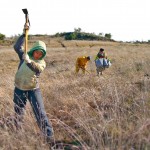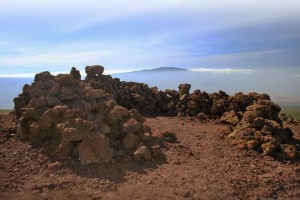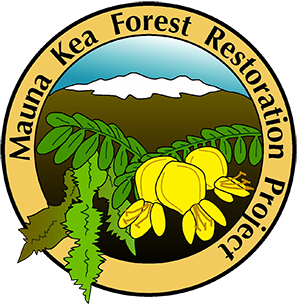

A Living Legacy
Take a journey through Mauna Kea’s high-elevation dry forest. High above tropical rain clouds, this forest has adapted to an extremely dry and cold climate normally found on continents. You will see plants and animals found nowhere else in the world as you explore this special place.
This forest is one of the last large tracts of dry forest left in Hawai‘i. While there are serious threats to this forest, restoration efforts are helping to protect this special home of a critically endangered bird, the palila.
Learn more... |
Welcome |
Their Only Home |
A Threatened Home |
"It is in these peculiar regions [dry forests] that the botanical collector will find more in one day collecting than in a week or two in a wet region...."
— J.F. Rock, Indigenous Trees of the Hawaiian Islands, 1913
 The remains of the past
The remains of the past
Hawai‘i’s once vast dry forests were diverse and distinct from others around the world. Mauna Kea’s high-elevation dry forest is the largest remnant of this legacy.
There are only a few native bird species remaining in the dry forest. Palila fossils have been found as faraway as lowland O‘ahu and Kaua‘i, but today the species only lives in the forest you walked through today.

 Restoring hope
Restoring hope
A renewed effort to protect and restore the forest is helping to ensure the palila and its forest home are here for generations to come.
 Restoration efforts starting in the 1930s removed tens of thousands of non-native sheep, and continues today. At the same time, community volunteers enthusiastically help to replant the forest every year.
Restoration efforts starting in the 1930s removed tens of thousands of non-native sheep, and continues today. At the same time, community volunteers enthusiastically help to replant the forest every year.
This reforestation effort is vital. As you look downslope, notice the effects 200 years of ranching have had to your right, compared with the Ka‘ohe Restoration Area directly below, protected since 2006.
 A Revered Forest
A Revered Forest
Mauna Kea’s high-elevation dry forest is one of Hawai‘i’s more remote natural areas. As part of the wao akua (realm of the gods), Hawaiians respected this forest and so rarely visited it. Only kahuna kālai pōhaku (expert adze makers) and those on pilgrimage to the summit’s sacred sites traveled through this elevation.
Ali‘i (royalty) were among the pilgrims. One account of these travels, Queen Emma’s 1881 visit through the Kilohana area on her way to Lake Waiau, describes her appreciation for this forest: “…E aha ana lā Emalani?
“…E aha ana lā Emalani?
“…What is it that Emalani is doing?
E walea a nanea a‘e ana
Relaxing and enjoying
i ka leo hone o ka palila,
the sweet voice of the palila,
‘oia manu noho kuahiwi….”
those birds that dwell on the mountain….”
—from the 1882 song “He Inoa Pii Mauna no Kaleleonalani” about Queen Emma’s visit to Mauna Kea
